
11 Legendary Literary Hoaxes
From Fake Irish Poets to the Genius of JT Leroy
Isn’t it true that all of literature has a bit of the hoax about it? Plato claimed that regarding poetry, “we are very conscious of her charms; but we may not on that account betray the truth.” He wasn’t wrong. The incidentals of fiction are untruths—George didn’t shoot Jay Gatsby, the Pequod never sank, and Mr. Darcy never married Eliza—for the absurdly simple reason that none of these stories ever happened. Now, those who oppose Plato’s condemnation may argue some variation that “Art is a lie which reveals the truth,” and they’re not wrong either. But, literature can still feel fraudulent; all of it a ruse, a trick, a mirage, a lie, a swindle, a fabrication, a forgery.
However, some books are unambiguously fraudulent, not in some metaphysical sense, but in a literal one. The archive is replete with “discovered” literature whose origin was the mind of the huckster who claimed to have found it—a shadow tradition within respectable letters. The fake, the forgery, the fraud has been relegated to the forbidden files; the hoax by virtue of its vice is not fit to be read in polite company.
A well-done hoax complicates the normative perspective, forcing us to revaluate some of our presuppositions about literature. We do ourselves no favors by letting the sins of the authorial parent pass on to the textual child. Thus, what I present is an alternative syllabus, the hidden corpus of the fake, the canon of the lie, the orphan bastard children of the library, an incomplete and idiosyncratic list of literary hoaxes—some great, some simply deceitful, all fascinating.
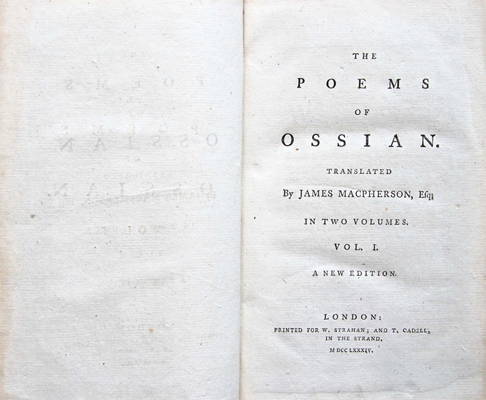
Fragments of Ancient Poetry by “Ossian,” aka James Macpherson (1760)
James Macpherson of the University of Edinburgh, one of the first professors of a modern language, claimed to have gathered fragments of a Gallic epic tradition rivaling that of ancient Greece. Its greatest poet was a bard named Ossian—the Celtic Homer, supposedly the son of the mythic Irish hero Fionn mac Cumhail. Macpherson hoped to establish an antique literary culture for Scotland every bit the equal of a Virgil. Thomas Jefferson claimed that this “rude bard of the North” was “the greatest poet that has ever existed,” and Napoleon supposedly slept with a copy of the cycle by his bedside. Others were less impressed; Dr. Johnson, who suspected from the outset that the volume was a forgery, was asked whether he thought any man living could write verse as sublime as that of the ancient Scottish bard. The lexicographer replied that yes, he thought that “many men, many women, and many children” could produce writing as good as that of “Ossian,” and that anyone could do so if they would only “abandon” their mind to it. The ancient poet may never have lived, but Macpherson constructed a hoax so powerful that it arguably triggered that mishmash of nationalism, folklore, nostalgia, and spontaneous overflow of powerful feelings that we have come to call the Romantic era. Ossian inspired figures as varied as Goethe, Berlioz, Thoreau, and Mendelssohn. 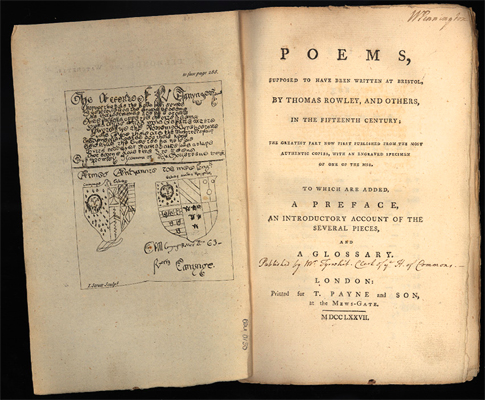
The Poems of “Thomas Rowley” by Thomas Chatterton (1777)
One con-artist-cum-poet was Thomas Chatterton, who “discovered” a cache of medieval poetry by a monk named “Thomas Rowley.” Raised on Chaucer, Chatterton was fascinated by England’s medieval past, which the iconoclasm of Reformation and modernity smashed away. Growing up among the bare-ruined choirs of his native Bristol, he invented a 15th-century alter ego who composed in a stock archaic Middle English. Chatterton had a melancholic disposition that was fully in keeping with the Romantic vagaries of his era. Prefiguring his own suicide in 1770 at the tender age of 17, Chatterton had Rowley reflect “Mie love ys dedde, /Gon to hys death-bedde, /Al under the wyllowe tree.” Chatterton found himself rebuffed by London literary society, yet in death, he attracted a new popularity and was celebrated by Wordsworth, Shelley, Coleridge, and Dante Gabriel Rossetti. The death of a beautiful youth is a Romantic theme par excellence, and though Chatterton is obscure today, his suicide was a popular posthumous theme—examine Henry Wallis’s pre-Raphaelite painting of the death—pale, fey, effeminate, red-haired Chatterton laying in repose, as if he were Ophelia floating upon the water.
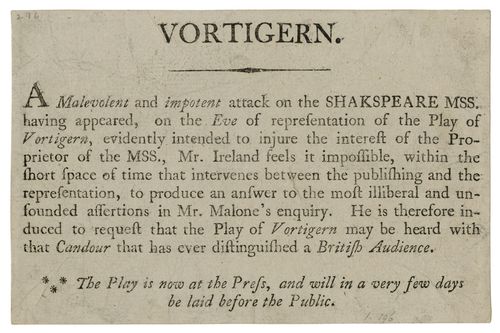
Vortigern and Rowena by “William Shakespeare,” aka William Henry Ireland (1796)
Much like King Lear and Cymbeline, Vortigern and Rowena drew from that antique corpus of mythic history known as The Matter of Britain. Unlike those other plays, this one wasn’t actually written by Shakespeare. A 19-year-old William Henry Ireland supposedly uncovered the play, and it premiered in 1796 at London’s Drury Lane Theatre. Despite the perfunctory placements of Shakespearean tropes, critics denounced the play as a poorly executed hoax. The audience instantly recognized the poorly executed fraud, “this solemn mockery” as the play appropriately refers to itself. Vortigern and Rowena was not Ireland’s first attempt; he had previously forged Shakespearean correspondence, including love letters to his wife, a letter to the Queen, and a solemn, patriotic and faithful document of allegiance to Protestantism. Completely disgraced, Ireland would eventually admit to the fraud in an 1805 confession.
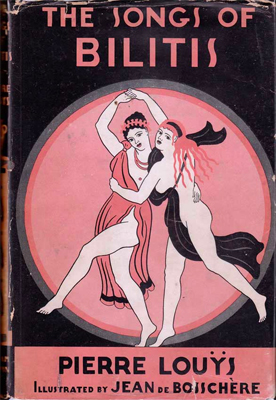
The Songs of Bilitis by Pierre Louÿs (1894)
Few bodies of work exert the almost transcendent power as that of Sappho—aphorist of Lesbos, the eleventh muse herself. In 1894, one French poet claimed to have discovered Sappho’s poetic equivalent in verse carved within a Cypriot tomb by a courtesan named Bilitis. The vast majority of the West’s classical inheritance has been lost to fire, decay, entropy, malice, and plain bad luck. Yet, Pierre Louÿs claimed to have translated 143 poems of Bilitis. Already a well-respected avant-garde poet, Louÿs used The Songs of Bilitis as an opportunity to explore erotic themes that were largely off-limits in Victorian society (even as Rimbaud, Verlaine, and Baudelaire began to tread similar ground). The Songs of Bilitis used this persona to address things like lesbianism and prostitution. The poet writes, “He crushes me so hard that I shall break, frail little creature that I know I am; but once he is in me nothing else exists, and I could have my four limbs cut away without awakening from my ecstasy.” The Song of Bilitis would remain a bohemian touchstone, with some of the lyrics eventually set to music by Debussy, and the book passed as a type of erotic samizdat among the underground throughout the 20th century. Bilitis may have been a creation of Louÿs’ mind, but “her” verse was immaculate.

The Poetry of “Ern Malley” by James McAuley and Harold Stewart (1943)
Australian pranksters James McAuley and Harold Stewart were traditional in their aesthetic tastes and argued that much free verse, bricolage, and fragmentary writing were markers of pretension. Firmly believing that the modernist emperor had no clothes, the two conceived of and wrote all of the poetry of the surrealist “Ern Malley” in a single day. Motivated by “the loss of meaning and craftsmanship” in poetry, they wished to unmask the incoherence of modernist verse. Using the collected works of Shakespeare, books of quotations, the dictionary and their own poems, the two randomly selected lines and words (in a manner not dissimilar to how many actual Dadaist and Surrealists wrote) to create purposefully bad poetry. According to their back-story, Malley was an English immigrant who died while only 25. Soon after the two conceived of Malley, John Reed of the experimental journal Angry Penguins received a letter from “Ethel Malley” containing one of her brother’s poems. McAuley and Stewart had imagism, surrealism, Dadaism, symbolism, and futurism as targets, but their parody impressed Reed as genuine, and a stunning 16 poems were published without irony. The press reacted with immediate incredulity upon the release of the issue devoted entirely to Ern Malley, with Reed accused of being the prankster. Embarrassed, Reed hired a private detective to investigate Malley, with McAuley and Stewart ultimately admitting that they were the actual authors. Believing that modernist poetry “rendered its devotees insensible of absurdity and incapable of ordinary discrimination,” they argued that they had demonstrated just how vapid, empty, and incoherent contemporary poetry was. Yet despite this, the poet Robert Hughes, who was totally aware of the hoax, celebrated their poems as “icons of literary value.” Text and intentionality have a tenuous relationship, and nowhere is this more obvious than when a prank turns back on its pranksters.
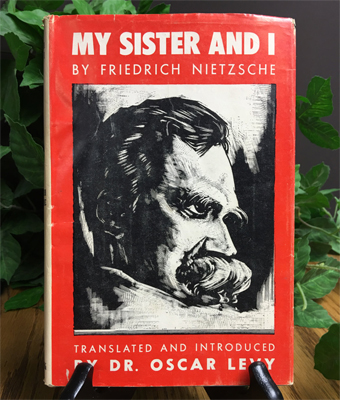
My Sister and I by “Friedrich Nietzsche,” aka Anonymous (1951)
Friedrich Nietzsche wrote about many things—Zarathustra, the Anti-Christ, the Übermensch, the myth of eternal reoccurrence, the Apollonian and the Dionysian. One thing that he never commented on was Detroit, Michigan. “If only the Americans would work up a really healthy interest in my books, an interest strong enough to require a lecture course given by me in fascinating places like Detroit.” One would think that a reference to Motown in the oeuvre of Nietzsche would be obvious evidence that the text was perhaps less than legitimate. Nevertheless, there was a small minority in 1951 who believed My Sister and I to be authentic. Yet it is hard not to see where the enthusiasm came from: My Sister and I would have been Nietzsche’s final confession, written while institutionalized at a Jenna mental hospital, and only his second autobiographical piece. In characteristic aphoristic style, “Nietzsche” admits to an incestuous relationship with his sister and to an affair with Richard Wagner’s sister. My Sister and I was released by New York publisher Samuel Roth, the defendant in the Supreme Court first amendment case Roth vs. The United States six years later. Roth had served jail time for the mailing of pornographic materials, but his Seven Sirens Press was also instrumental in introducing American readers to experimental modernism, albeit illicitly, with James Joyce’s Ulysses on his catalogue. Philosopher Walter Kaufmann, in the Partisan Review, demolished the idea that My Sister and I was in any way authentic, pointing out references that Nietzsche couldn’t have known, historical events mentioned which occurred posthumously, and jokes that would have made no sense in the German original (which Roth claimed was lost). So who actually wrote the damn thing? Respected Nietzsche scholar Oscar Levy supposedly penned the introduction, but his daughter vehemently insisted he had no role in the affair—and conveniently, for Roth, Levy was already dead. The obvious suspect would be Roth himself, but in 1965 Kaufmann received a letter by a writer named George Plotkin, who claimed he wrote My Sister and I when offered a “flat rate” by Roth. 
Naked Came the Stranger by “Penelope Ashe,” aka Mike McGrady and Others (1969)
The prose was purple, the cover was pulpy, and the title was a double-entendre so obvious it was corny. Naked Came the Stranger, with its cover depicting a naked blonde from behind, didn’t appear any different from other filthy paperbacks churned out by seedy presses—and that was precisely the point. Newsday reporter Mike McGrady was flummoxed by trashy novels like Jacqueline Susann’s Valley of the Dolls, and he was convinced that all it took for a “literary” work to become popular was a dollop of smut. His aim with Naked Came the Stranger, and that of the unbelievable 24 fellow Newsday reporters he collaborated with (including two Pulitzer Prize winners), was to write a book so trashy and irredeemable that it could not be defended on any sort of critical grounds. Furthermore, their task was to produce a novel that would be incredibly popular precisely because of its aesthetic deficiencies. McGrady explained that, “There will be an unremitting emphasis on sex. Also, true excellence in writing will be quickly blue-penciled into oblivion.” And so, “Penelope Ashe” wrote Naked Came the Stranger. Ashe chronicles the erotic adventures of radio host Gillian Blake, who sleeps her way across King’s Neck, New York, trysting with everyone from a rabbi to a mafia boss. A typical description: “Then he pulled off the black net panties—there was a cellophane sound as they were peeled past her knees.” When McGrady revealed the ruse on The David Frost Show, the book had already sold 20,000 copies; after the confession an additional 90,000 would move off bookstore shelves. Today, the book has sold almost a half million copies. 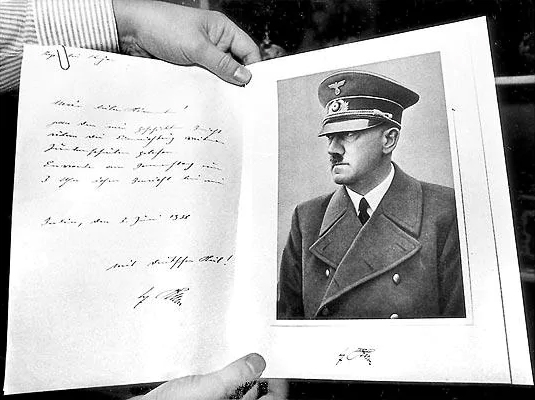
The Hitler Diaries by “Adolph Hitler,” aka Konrad Kujau (1981-1983)
A disreputable East German forger of Nazi memorabilia thought it would be a hell of a thing if Adolf Hitler had kept detailed diaries; in lieu of the actual thing existing, Kujau simply wrote the entries himself. In the process, he briefly hoodwinked the respected historian Hugh Trevor-Roper and sold the manuscripts to Stern magazine for over nine million Deutschmarks. Kujau produced the fake diaries in a period appropriate notebook, making sure that his ink was accurate to the era, and writing in a distinctive gothic script. The diary depicted Der Fuehrer in a comically domestic environment, one entry explaining that Eva Braun “now has two little puppies, so time does not lie too heavily on her hands,” or in another section Hitler exasperatedly gripes, “How on earth does Stalin manage it?” Eventually the diaries were acquired by Rupert Murdoch’s British paper The Sunday Times (which had been previously tricked by a forgery of Mussolini’s diaries), and Newsweek in the United States. For a gossip obsessed tabloid culture, these mundane journeys into the banality of evil were irresistible, and a media player like Murdoch couldn’t help but salivate at Kujau’s claims that he had dozens of volumes of private writings by the dictator. Of course, the other jackboot fell when the inconsistencies of his claim began to add up, and ultimately Kujau found himself the rare literary trickster sentenced to actual prison time. Upon release, he opened an art gallery selling counterfeits of Dali and Miro paintings (with Kujau’s signature on them).
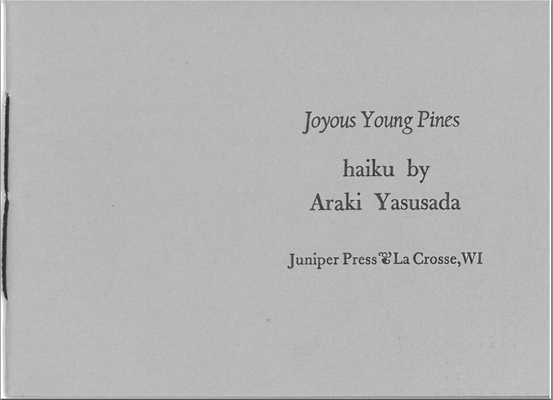
The Poems of “Araki Yasusada” by Kent Johnson (c. 1990)
Araki Yasusada was supposedly a survivor of the atomic bombing of Hiroshima who wrote poems while working as a mailman, his verse discovered by his son after his death in 1972. Two decades later they started to appear in American literary journals, including American Poetry Review. Yasusada’s work was gnomic, aphoristic, Zen-like and universally praised—until the much-missed academic life magazine Lingua Franca revealed that it was all a charade. Editor and poet Kent Johnson has been identified as the person most likely to have written the poems, something which he still denies, though he does admit that Yasusada was never a real person. Disturbingly evoking the horrors of Hiroshima, Yasusada writes of his daughter’s death: “You are a little girl with blistered face, pumping your legs at a great speed beside the burning form of your Mother.” What right did Johnson (if indeed he is the actual poet) have to write such intensely personal verse about an experience utterly foreign to him? The editor of American Poetry Review (who was also, of course, a victim of the ruse) called the stunt a “criminal act,” but the Yasusada affair raises complex philosophical questions about categories like “Fiction,” “Real,” “Fake,” and even “Author.” We discover that these are ever shifting, culturally mercurial categories; for if two generations of fancy French theory have taught us anything, it is that in an Author there is Legion. 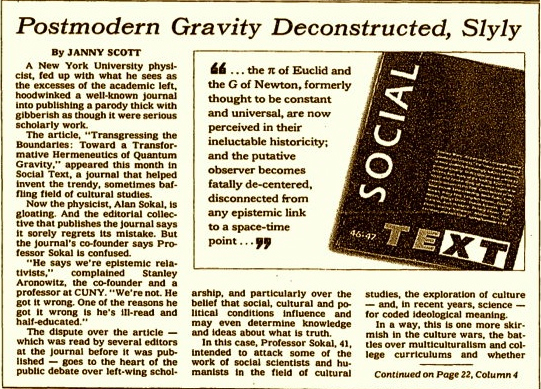
“Transgressing the Boundaries: Towards a Transformative Hermeneutics of Quantum Gravity” by Alan Sokal (1996)
One person who would not be impressed by that previous bit of post-structuralist sophistry is Alan Sokal, who punked the entire discipline of English 20 years ago. After French philosopher Jacques Derrida’s landmark presentation at Johns Hopkins University in 1966, departments of English and modern languages had come under the sway of “Theory;” a heady brew of European philosophy exemplified by figures like Derrida, Barth, Michel Foucault, Luce Irigaray, and Jean Baudrillard. Critics (and perhaps some supporters) charged the movement as being relativist, subjective, purposefully obscure and difficult, as well as possibly nihilistic. Sokal was one such critic, an NYU physicist and avowed left wing revolutionary who feared that Theory marginalized progressive politics by being anti-empirical, anti-objective, and anti-scientific. He wrote a purposefully ridiculous paper that was accepted at one of the leading journals of post-modern cultural studies, the Duke University housed Social Text. Sokal made bizarre assertions such as “[science] cannot assert a privileged epistemological status with respect to counterhegemonic narratives emanating from dissident or marginalized communities,” and filled the rest of the paper with a startlingly funny pastiche of humanities jargon. By doing this, he hoped to identify a vein of intellectual vacuousness in contemporary scholarship. The same day that Social Text published the original article, Lingua Franca published Sokal’s confession to immediate controversy. Sokal found some allies whom he might not have appreciated, such as conservative columnist George F. Will, who was delighted that ivory tower leftists were having some of the piss taken out of them. Denunciations of the prank were swift; a collection of theoretical heavy hitters from Derrida to Stanley Fish stepped into the fray via the editorial pages of Le Monde and The New York Times. Social Text responded by accusing Sokal of being unethical as the journal was explicitly not peer reviewed, and Sokal’s paper was accepted in good faith due to his sterling academic credentials.

The Heart is Deceitful Above all Things by JT Leroy, aka Laura Albert (1999)
The transgressive writer JT LeRoy, supposedly born in rural West Virginia in the early 80s, lived a life of vagrancy, drug addiction and male prostitution in California. “LeRoy” was actually Brooklyn-born Laura Albert, a writer for the TV series Deadwood. Under the guise of LeRoy, Albert explored questions of gender, abuse, addiction, violence, family, poverty, homelessness and crime, finding that it was possible to say things while performing as this character, or “avatar,” that she was unable to say with her real name. Albert in part justified the persona as a means of therapy, as a way for her to work through her own psychological traumas with the assistance of her creation, telling one reporter that she equated her writing to “the way an oyster creates a pearl: out of irritation and suffering. It was an attempt to try to heal something.” The Heart is Deceitful Above all Things functions as a sort of Southern gothic magical realist fable about an abused and drug addicted adolescent boy. Under the guise of LeRoy, Albert also wrote two novels, a novella, a book of short stories, numerous articles, and even a screenplay for a Gus Van Sant film. She even convinced her sister-in-law to appear at events as the sleight and effeminate LeRoy (with Albert as LeRoy’s assistant), which ultimately led to her identity being revealed by an investigative reporter at New York magazine in 2005. There was an outcry, of course, from those who felt that Albert’s creation of Leroy was simply base fraudulence, but she had her supporters as well, including authors Mary Gaitskill and Dennis Cooper, and rock stars Billy Corrigan and Shirley Manson. As in the best of literary “hoaxes,” Albert brilliantly got to the core of what is so mysterious about the act of writing itself, especially as it intersects with identity and authorial intention. Now, a new generation of potential readers can decide where they stand on the issue with the release this month of Jeff Feuerzeig’s documentary Author: The JT LeRoy Story. When we strip away all of the ethical implications, the affair demonstrates, as all hoaxes do, those enduringly fascinating questions about the relationship of life to literature.
Ed Simon
Ed Simon is the Public Humanities Special Faculty in the English Department of Carnegie Mellon University, a staff writer for Lit Hub, and the editor of Belt Magazine. His most recent book is Devil's Contract: The History of the Faustian Bargain, the first comprehensive, popular account of that subject.



















